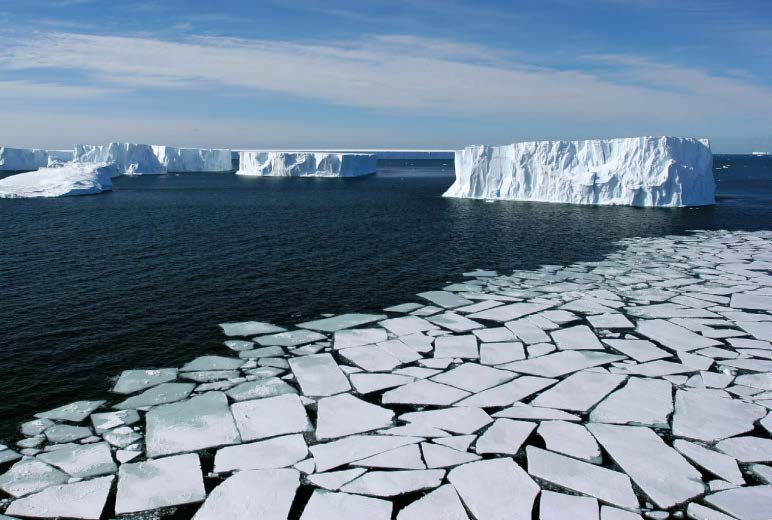
Photo: eeilers/Getty Images
Ross Sea, Antarctica
The greatest sea level change will result from the continued melting of Antarctic ice sheets.
Twenty thousand years ago, the world was in a deep freeze. There had been so much water sucked up from the oceans and locked up in glacial ice that world sea levels were some 400 feet below modern ones. The Greenland ice sheet alone was 30 percent larger than it is today.
Global geography was also radically different. You could walk dry-shod across a low-lying land bridge from Siberia to Alaska—and early peoples did exactly that. Britain was part of the Continent; the Thames flowed through the English Channel. The North Sea was a low maze of rivers, marshes, and wetlands—a paradise for the several thousand hunters and fishers who lived there.
Then natural global warming set in some 15,000 years ago. Ice sheets retreated rapidly by geological standards, releasing at least four major surges of glacial meltwater from land. One such surge from melting North American ice sheets triggered a sea level rise of up to 50 feet that contributed to the inundation of the North Sea.
Today, the seas are rising again. According to NOAA, the global mean sea level has risen about 6.5 inches (16 centimeters) since 1880, nearly half of it since 1950. This is unevenly distributed, nationally and globally, but it is happening almost everywhere. Generations of scientists have wrestled with the still only partially understood